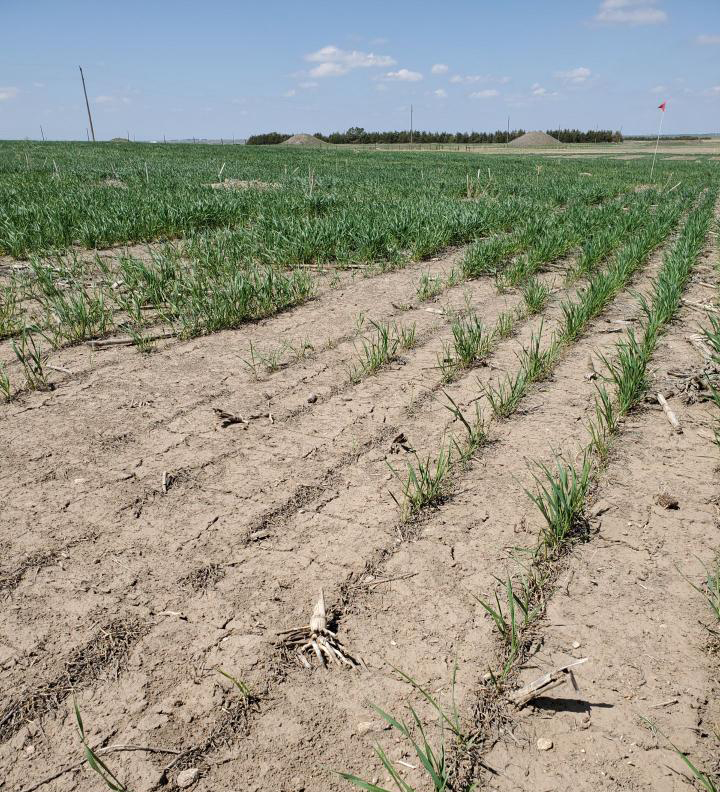![]()

By Chabella Guzman, communications specialist
The Hard Red Winter Wheat growth in western Nebraska and the surrounding areas is behind, and Cody Creech, Nebraska Extension dryland cropping specialist, added it is behind by about two to three weeks in growth.
“It’s been a cool, dry spring, so we haven’t had a lot of growth in the wheat. It has greened up,” Creech said. “So, we can now see what kind of stand we have, or winter kill.”
The delayed growth may impact the wheat as the season progresses. If it pushes the wheat later into the hot summer, it will negatively affect the flowering and grain fill.
“Overall, even with our winter kill, I’m still optimistic with our wheat crop. We saw relatively good stands. It’s been cool, and the wheat has not been stressed yet. We could use rain and some sunshine,” Creech said.
Ideally, soil with good moisture helps to insulate the plants. This past year the dry soils exposed the wheat plants to various kinds of stress, resulting in winterkill.

The winterkill has been very spotty, depending on where there were snow drifts or water pooled, and the freeze event in December was another factor in creating bad conditions for the wheat plants.
“We’ve also seen some winter kill depending on the variety (wheat) used. There’s varietal differences if it has more lineage out of southern varieties, as opposed to one from a more northern region,” Creech said.
Another factor can be the planting depth. Seeds planted a little deeper in the fall received more protection from the elements and will produce better stands. The wheat still has plenty of yield potential if it can catch some timely rains.
In western Kansas, the wheat is beginning to head out and is under severe stress. Creech said even with recent rains. They will likely lose yield potential.
“The issues with winterkill is not just localized to the panhandle. We’ve seen it across the state this winter. We’ve lost our plots in southeastern Nebraska near Fairbury. It went in behind soybeans, so went in a little late, in dry soils, and didn’t get well established,” he said.
There are still okay stands in Mead and Clay Center, but about 25 percent of the wheat has been lost. In western Nebraska, Creech said, it’s not just the winter wheat, but winter barley has been wiped out in both Sidney and near Big Springs, and there were some reductions in the canola crops.
“It was a really tough winter on the winter crops, across the state and across the different crops we grow,” he said.
He added growers should make a decision on what to do with their wheat fields. If they are not taking the crop to harvest, they need to call their insurance agent to see if they can get the field released. After a field is released, the farmer will need to decide if they want to plant something or let it fallow. Growers putting in a crop may plant forages or millet, which can be budget-friendly and low-risk.
